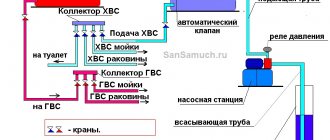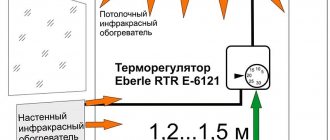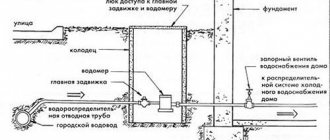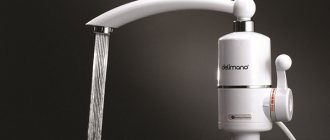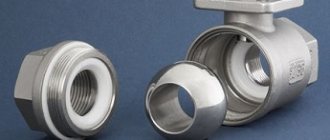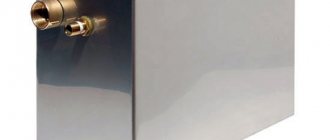Good time of the day, dear reader! The piping systems that supply heat, gas and water to our apartments and houses include many locking and regulating devices, various shaped elements. Limited space in bathrooms and kitchens, interior design features dictate their requirements for the placement of these elements and their number.
In this case, the corner faucet becomes the best option for connecting household plumbing fixtures. It can be immediately installed in the place where the pipes are fed at an angle, without cluttering the structure with additional fittings.
Purpose and scope
Products can be installed as locking devices in any engineering systems, as well as for:
- division into sections of heating risers,
- pump switching - on bypasses;
- convenient dismantling of batteries;
- adjusting the drying temperature of the heated towel rail;
- bleeding air in the heating system (instead of Mayevsky's air taps);
- connections of flexible piping of mixers, washing machines, water heaters, gas stakes and stoves to supply pipelines (gas and water supply);
- connections of supply pipes to air conditioning and ventilation units;
- in places of turning of pipelines for transportation of food solutions, oil products, chemicals.
Characteristics
The main technical characteristics are the following product parameters:
- nominal bore diameter - from 15 to 50 mm;
- maximum working pressure - from 10 to 16 atm .;
- type of connection to pipelines - coupling, flanged, welded or combined (one of the nozzles is welded);
- type of thread - internal or external;
- type of control of the locking element - handle - butterfly or lever;
- body parts material;
- operating temperature range - from -20 ° C to 150 ° C (depends on the material used for the manufacture of the device);
- seal tightness class.
The main dimensions of the products can be determined from the table:

What materials are they made of
A similar product can be made from:
- brass and bronze. They serve for a longer period, as they are almost not subject to scale formation;
- of stainless steel. Despite the high strength and anti-corrosion properties of the material itself, stainless steel faucets quickly become covered with scale, which negatively affects their service life;
- plastic - mainly installed on plastic pipelines. Although plastic is a less strong material than metal, this type of reinforcement is considered to be quite durable;
- silumin (an alloy of aluminum and silicon) are short-lived, quickly wearing out products, mainly made in China.
Materials (edit)
The material from which the product is made determines not only its cost, but also its durability.
Therefore, below we will consider the main features of the most common materials:
- Brass and bronze are distinguished by the fact that scale practically does not settle on them, therefore, products made from these materials are the most durable.
- Stainless steel is a durable material, however, scale deposits more strongly on it.
- Plastic - as a rule, they are used with plastic pipelines. Despite the fact that plastic is a less durable material than steel, such devices are quite durable.
Note! On the market you can find Chinese cranes made of silumin.Despite their cheapness, such a purchase can hardly be called profitable, since these products quickly fail.


Valve for heated towel rail
Advantages and disadvantages
Angular body locking devices have the following advantages:
- reliability and high quality;
- the variety of materials from which they are made;
- ease of use;
- ease of installation;
- low hydraulic resistance;
- affordable price;
- minimum closing time;
- lack of stagnation zones where dirt can accumulate.
If we talk about the disadvantages of these products, then it is one: the impossibility of regulating the water pressure.
Differences between a crane and a gate valve
The main difference between a crane and a gate valve is the principle of their operation. The gate valve can have a gate of different shapes - wedge, disc or sheet, but it always makes perpendicular movements relative to the axis of the fluid flow in the pipeline on which it is installed. To shut off the flow, it is required to rotate the spindle on which the locking part is fixed.
The crane is also included in the group of shut-off valves. But, unlike a gate valve, to shut off (or, conversely, start) the flow going through the pipe, it does not need to rotate the spindle.
The valve gate always has an opening for the passage of the working medium. Accordingly, to start the flow of the medium, you just need to change the position of the shutter element so that the hole in it coincides with the axis of the pipeline. There is no need to rotate the spindle.
Types of chrome-plated valves and their features
In addition to its direct purpose - regulating the water supply, the heated towel rail should look attractive. Therefore, the construction details are chrome-plated. Each type has its own nuances.
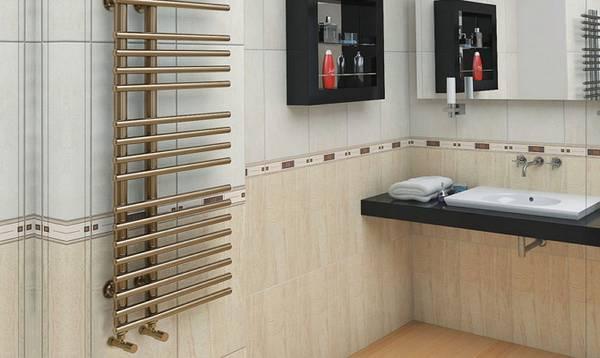

Photo 1. Heated towel rail with two corner taps that allow you to shut off the water supply at any time.
Mayevsky crane
Looks like a tapered screw housing. Serves to remove air plugs from the system, normalizes the circulation of water in it... If air accumulates in the system, the heated towel rail does not heat up well. Then it cannot be used for its intended purpose.
Important! To completely remove the airlock, you need this carry out the procedure until water droplets are released.
The mechanism simple working principles. When the shutter opens, air moves from the heating system to the heated towel rail, and then is removed through a special hole. If the valve is in the closed position, the screw is pressed firmly against the body, which has a calibration hole.
Ball
It looks like a chrome-plated body and a ball-shaped locking mechanism. With the help of the handle, the water supply to the system is smoothly regulated. The handle is made in the form of a swivel "lamb".
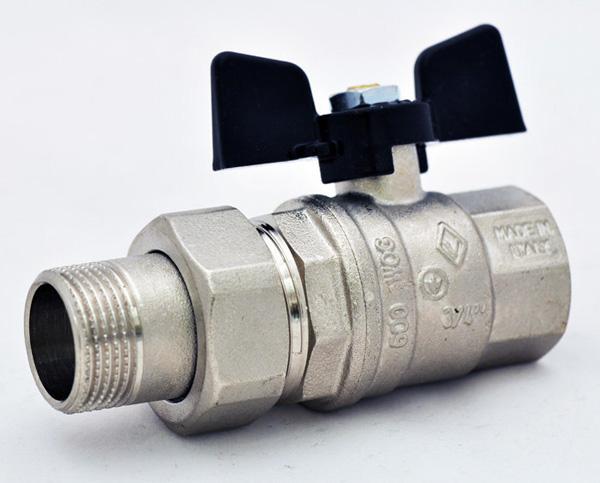

Photo 2. Brass ball valve with an American, with which you can smoothly regulate the water supply.
If you install a ball valve at the inlet and outlet of the heated towel rail, you can completely shut off the water.
Reference! The valve design provides for the possibility of installing a thermostatic head. This element allows you to monitor the operating temperature of the water in the system..
Types and designs
Depending on the design of the closing mechanism, this corner fittings are:
- Ball - with a lock in the form of a ball with a through hole. If the ball in the body cavity turns around with a hole perpendicular to the flow axis, then the flow of the medium stops. The tightness of the product in the closed state is ensured by elastic rings fixed to the saddles and well-fitting to the ball. They can have an internal or external thread. The diagram of the device of the Italian-made BUGATTI ball valve can be seen in photo 1.
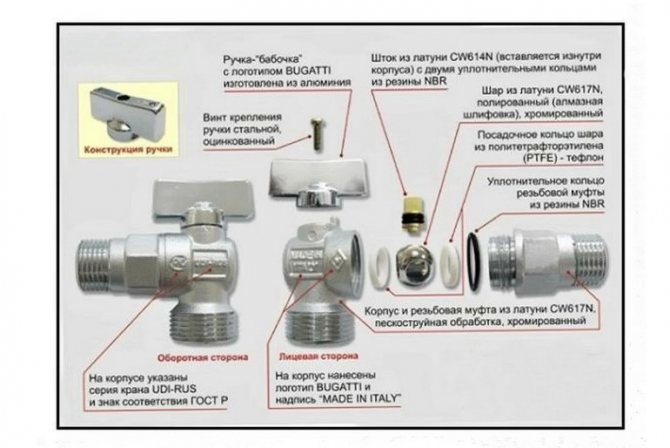

One of the varieties of angular ball valves is an American crane.They combine a standard ball valve design and a quick coupling type, which is a design of two nipples separated by a single gasket. They use a hexagonal brass union nut to secure the connection.
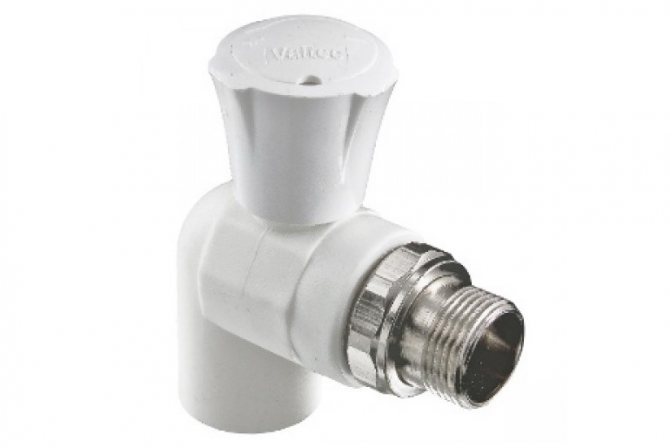

Crane photo - American
- Conical - with a locking element made in the form of a truncated cone. Such devices operate more smoothly than ball products.
- Valve. The design of this type of valve includes a shutter in the form of an elastic gasket and a worm gear, which presses the stem and the locking element against the seat with a hole. As a result, the gasket will block the passage. By turning the handle, the handwheel can again set in motion the stem, which will raise the shutter and open the bore. The advantage of installing a valve in pipeline systems is its maintainability and the ability to use it not only for blocking the passage, but also for adjusting the pressure. The disadvantages of such products include the rapid wear of the movable pad.
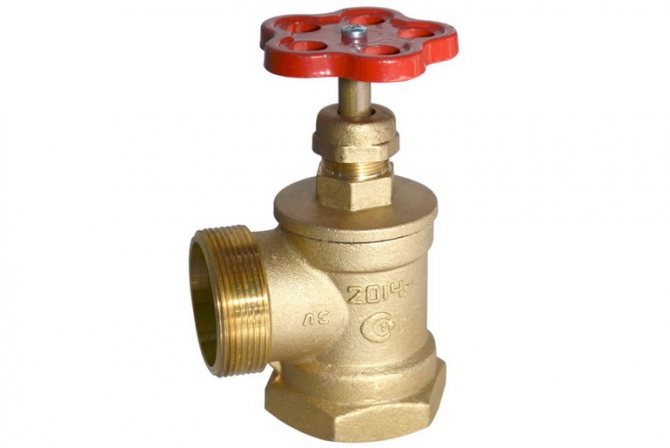

- Radiator. The products are designed for manual adjustment of the flow rate of the coolant entering the radiators. In their group, they are subdivided into:
- balancing (control) valves. In heating systems, they are usually placed on the return connection to the radiator, on the supply - it is advisable to install a ball valve;
- thermostatic models (with thermal head). The principle of its operation is based on the thermal expansion of media. The main element of the device is a bellows filled with a substance with a high coefficient of expansion in liquid or solid state. The bellows is connected to the valve by means of a stem. When the thermal head is heated, the bellows elongates. It acts through the stem on the valve, which shuts off the flow. When cooled, the siphon shortens and opens the passage opening;
- devices with a thermostat that allows you to control the flow rate of the coolant.
Photo of a thermostatic valve in section:
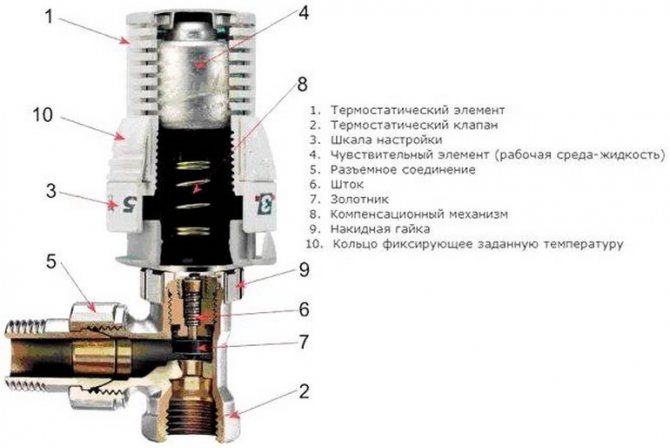

Features of the device of different types of cranes
Ball devices have a simple flow opening and closing mechanism in the form of a ball with a bore.
Chokes are a conventional valve equipped with a valve and stem, which ensure tightness by lapping metal surfaces to each other. Unlike ball valves, they can smoothly shut off the flow in several turns.
Note! Balancing taps are installed on all radiators of the line, except for the last one, on the connections to which an ordinary ball valve is usually placed.
The essence of the thermostatic valve is based on the principle of thermal expansion. The design consists of a bellows filled with a liquid with a high expansion coefficient. The bellows is connected to the valve, which, when heated, closes the valve, and after cooling, on the contrary, opens it.
Selection Tips
When choosing a product, you should rely on the following criteria:
- quality characteristics;
- manufacturer's reputation;
- material of manufacture;
- processing technology of constituent parts;
- appearance;
- angle of rotation;
- standard size of pipes;
- price.
Here, it is important not to buy a fake silumin, which outwardly does not differ from a brass product. Its service life is no more than 12 months.
A high-quality brass device can be distinguished by its weight - it is much heavier than a silumin crane.
And yet, do not hesitate to request a quality certificate from the seller confirming the declared technical characteristics of the product.
Selection of corner cranes
What type of tap to install when installing the heating circuit depends on the customer's requirements, on the place where they will be located in the heating circuit, as well as on the purpose of use.The main mistake of buyers who are poorly versed in shut-off and control valves is the purchase of fakes - cheap low-quality products, which are also called silumin. Some dishonest sellers pass them off as brass faucets, even though they are not. Silumin taps usually serve no more than a year, quickly crack under the influence of high temperatures, and even fall off the radiator.
We recommend that you familiarize yourself with: The use of a corrugated stainless steel pipe for a heating system
approximate price
The cost of the corner crane, in addition to its standard size, is influenced by the decorative design, the name of the manufacturer and the country of its production. Domestic products are significantly cheaper due to customs duties and delivery distance. Roughly, the price of different cranes with a nominal diameter of 15 mm in Russian retail is:
| Device type | price, rub. |
| Ball (brass) | 260 — 320 |
| Thermostatic tap | 350 — 600 |
| American | 650 |
| Polypropylene product | 130 |
Basic information
The radiator polypropylene corner faucet is quite popular in the construction of modern heating networks. Its price is really low, but it allows for the reliable functioning of the communication system. The polymer material is able to withstand significant temperature changes.
Product characteristics
Devices with a polypropylene housing are excellent for shutting off the flow of media in water heating systems. The table below reflects the characteristics of this device, so that novice masters have the opportunity to familiarize themselves with them.
| Parameter | Value |
| Operation period | 15 years |
| Working environment temperature | |
| Operating pressure | 1 MPa |
| Leakage class | A |
| Full resource | 3000 cycles |
| Throughput property | 16-19 cc m / hour |
Attention! Not paying attention to the active use of polypropylene in the manufacture of similar products, other materials can also be used during production. Brass, for example, is no less popular.
Device device
The body of the product is made of polypropylene, while the outer part contains white dye, while the inner part does not. Under the cage there is a brass insert, equipped with a special thread, with which a special element with an O-ring is fixed.
The handle is much more often made of lightweight plastic. By means of a small screw, it is attached to a bronze rod with several gland seals. The shut-off of the flow of the working fluid is carried out thanks to the ball valve.
dimensions
The corner radiator valve 1 2 has a height of 88 mm. The distance from the top of the valve to the central axis is 58 mm, and from the beginning of the threaded connection to the central axis is 57 mm. As for the mass, such a product weighs exactly 160 g.
Radiator corner faucet 25 3 4 has a height of 99 mm. The distance from the edge of the valve to the central axis is 59 mm, and from the thread - 69 mm. Such a device weighs 230 g.
Installation tips
- Products can be installed in any position... There must be no dirt on the surface of the device. All work should be carried out at an air temperature of at least +10 degrees.
- The branch pipe is connected with a wrench... Once hand tightened, the union nut is tightened approximately half a turn. The thread is sealed with fluoroplastic sealing material.
- Fastening of the crane to a polypropylene pipe is carried out by the method of thermal action. During the work, a special welding machine is used. The operating temperature in most cases is 260 degrees.
Maintenance and Operation
Products must be used at a certain pressure and temperature. These indicators are set out in the table with characteristics.The body of the product must not be exposed to substances that are talented to react with polypropylene.
be directed to avoid cases with freezing of the working medium in the inside of the device, as this can lead to damage to the main parts. When draining the network, the tap must be left open so that the liquid does not remain in the cavities.
transportation and storage
Products must be stored taking into account the points of GOST 15150, which reflect the main requirements. Protect the products completely from prolonged exposure to sunlight. It is recommended to use ventilated sheds as the main container.
As for transportation, it can be carried out by any transport, because the products do not belong to the category of special cargo. Loading and unloading operations must be carried out at a temperature not lower than -10 degrees. If transportation is carried out in frosty conditions, then certain measures must be taken in order to prevent the transfer of mechanical loads.
Crane installation and operation rules
No matter how simple the installation process of a corner faucet may seem, there are a number of rules that must be followed when carrying out installation work:
- there must be free access to the device;
- the location of the adjusting handle should be such that it does not have obstacles to movement in any of its positions;
- there is usually an arrow on the body indicating the direction of fluid flow; during installation, this kind of indication must be followed;
- in order to avoid leaks in systems that include such a device, it is necessary to properly isolate the junction with the FUM tape;
- at the end of the product installation, the system must be checked for leaks.
Required tools and materials
To install the crane, you will need the following tools and consumables:
- scissors for metal or grinder;
- adjustable wrench;
- carving tool;
- calibrator;
- FUM tape to ensure tightness of the joint.
Work progress
The sequence of work on the installation of an angle faucet in the internal water supply network is as follows:
- first, all the liquid from the system is drained. To do this, turn off the water supply using the valve and open the valves;
- in the place where the device will be placed, a section of the pipeline is cut out. Its size should correspond to the length of the valve body;
- threads are cut at the ends of the pipes. If the system is assembled from plastic products, then a calibrator is used to process the ends (deburring, chamfering, leveling the cross-sectional shape);
- winding the sealing tape at least 5 turns. It will protect the threaded connection from deformation and ensure the most tight fit of the bends;
- the product is screwed in and fixed with an adjustable wrench;
- the tightness of the connection is checked. The check is carried out with the water supply turned on. If water oozes at the junction, then it should be additionally compacted with linseed tow or special fillers.
Selecting the type of crane
More modern manufacturers offer a wide variety of samples of water taps, which they can easily install on their own:
- multi-turn;
- ball.


Types of cranes
The tap should be chosen based on the location of the washing machine relative to the intended connection to the water main. If it is envisaged to bend the water intake system into the washing machine, then in this case it is better to opt for a ball angle faucet. Some examples of designs are shown in the photo. This design allows you to create a reliable connection at the transition points. The simplicity of the design of the ball valves will provide a quick shut-off of the water if necessary.Another plus in favor of choosing an angle ball valve is the presence in modern apartments of a separate gander, specially made to connect the washing machine to the water supply. Only in most cases, without using a corner transition, the elements of the water collection system (inlet hose) will greatly interfere.
Features of operation
The product must operate at a temperature and pressure level corresponding to its technical characteristics. During operation, the joints must be periodically checked, and if the threaded connection is slightly parted, then it must be tightened to avoid leaks. Variants with freezing of liquid in the cavity of its body should be excluded, as this will lead to its damage.
After draining the water from the network, the tap must not be closed immediately. Let it be open for a longer time so that the liquid does not stagnate inside.
Expert advice
- If the design of the system involves the placement of a crane and a corner next to it, then it is better to replace them with this type of fittings. This solution will save money and simplify the installation process.
- The model should be selected depending on the location of the pipeline. There are products designed for installation only on vertical risers and on horizontal sections.
- It is advisable to add an end valve to the irrigation hose with a device designed to concentrate or diffuse the flow of liquid. The product will work more efficiently.
- Devices with a thermal head must not be covered with furniture or finishing materials and must not be exposed to direct sunlight.
What are the corner faucets for the radiator
Depending on the installation method, the following types of corner valves for radiators are distinguished:
| Crane type | Description |
| Muff | It can be installed on pipes with a cross section of up to 4.5 cm. Installation of such a crane does not require special skills and can be carried out without specialized equipment and tools. In addition to heating systems, taps of this type are widely used in gas and water pipelines. |
| Flanged | Corner taps of this type are designed for installation on pipes with a cross-section of more than 5 cm. Installation of such structures is carried out using special seals that guarantee the tightness of the connection points. Flanged corner valves can be installed on all types of radiators. They are divided into two types: non-collapsible and collapsible |
| Welded | Installation of angle cranes of this type requires welding, therefore the installation of such equipment is carried out by qualified specialists. |
| Combined | Installation of such a valve for a radiator involves a combination of several assembly methods. Most often, such equipment is used when it is necessary to connect several different streams. |
Read the material on the topic: How to change a heating radiator without errors
Radiator Corner Faucet Size Chart
| Marking | Angle radiator valve 1/2 | Angle valve 3/4 for radiators |
| Height, cm | 8,8 | 9,9 |
| Valve length along the central axis, cm | 5,8 | 5,9 |
| Z Start of thread on the central axis, cm | 5,7 | 6,9 |
| Weight, g | 160 | 230 |
Another classification of corner cranes is based on their capacity:
| Crane type | Percentage of liquid transmission,% |
| Full bore | Up to 100 |
| Standard | 70-80 |
| Partial bore | Up to 50 |
To avoid the occurrence of various problem situations, it is better to use full bore designs that ensure the smooth movement of the coolant.
